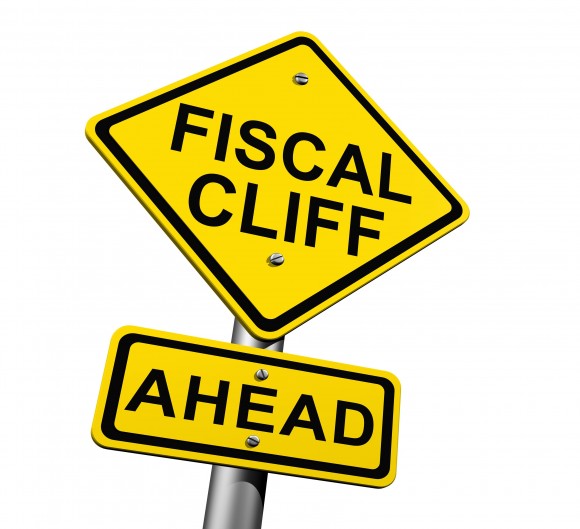We are all familiar with the old saying, “the only thing certain in life are death and taxes.” With the new tax laws that came into effect for 2013, we know this is really true now!
Capital Gains and Flat Tax Increases Ahead
The new capital gains tax has increased from 15 percent to 20 percent. But it doesn’t stop there. Another tax that was added for 2013 is a 3.8 percent flat rate tax on net investment income. This is income from interest, dividends, tax-exempt bond interest, royalties, rents and capital gains. This is applied to couples earning more than $250,000 and singles earning more than $200,000.
The main purpose of this tax is to help fund Medicare. This law was actually part of the Obama healthcare law to help offset the cost of the new healthcare legislation. This means that all together on capital gains, taxpayers are going to pay 8.8 percent more than in 2012. This was also due to Proposition 30 in California. Each of the top four income brackets saw an increase, which will be in effect for seven years. Both of these tax increases show that California especially is not looking out for its small businesses.
This means that if a taxpayer who is already in the top tier had a gain of $500,000, the taxes for 2013 would be $119,000 where in 2012 the taxes on this gain was $75,000.
Higher Personal Income Tax
For workers that have taxable income below certain levels their tax rates will remain at similar past levels of 10 percent, 15 percent, 25 percent, 28 percent, 33 percent and 35 percent. However, taxpayers with a higher income level will see a higher change in the taxes they pay for 2013. For singles making more than $400,000 or for couples making more than $450,000 they will see their tax rate jump from 35 percent to 39.6 percent. This means that if a married couple filed their taxes with an income of $650,000, they would pay $9,200 more then they did last year because of the tax changes. And this is just for federal taxes!
In California, we have seen many tax rate increases. Our sales tax went up by 0.25 percent with the passing of Proposition 30. For income taxes in California we saw an increase in the maximum tax rate from 10.3 percent to 13.3 percent.
So what does this mean for the typical insurance agency owner?
Here are a few points about taxes that the typical insurance agency owner needs to consider.
Estate Taxes
Is your estate worth more than $5.25 million dollars? It’s OK if it isn’t, but for 2013 an individual can now exclude up to this amount from his or her estate taxes. That means that with smart planning, most people would not have to pay any taxes on their estate. In fact, it’s only estimated that 3,800 estates are large enough to pay taxes in 2013. This should come as a relief to most people because without this new year tax agreement, estates worth more than $1 million per person were going to be subject to estate tax.
Business Succession
Owners close to retirement need to consider their business succession strategy now. Federal capital gains are at a high now in 2013, at around 24 percent for federal tax. If your exit strategy involves selling to an outside party, consider selling the agency through installment sales. This means that an owner could sell his entire book of business but spread out the gain over several years. That will ensure that you don’t pay top dollar in taxes for selling your agency.
Retirement Plans
Starting a retirement plan for an owner and his employees is a great way to save money on taxes this year, especially with income and capital gains tax rising for 2013. Business owners should consider establishing a SEP-IRA retirement plan. A business owner can contribute up to 25 percent of his compensation from the business into a SEP-IRA plan. The owner has to contribute the same percentage for all the qualifying employees. Both the amount contributed for the owner’s retirement and their employees’ retirement can be deducted from taxable income.
Reduce Taxable Income
Reduce taxable income any way legally possible – defer income into a HSA (Health Savings Account) or into next year, or make charitable donations. Add to an IRA or 401(k) with the maximum allowed for age and situation.
The top tax deductions for a small business are auto expenses, expenses of going into business, legal and professional fees, bad debts, business entertaining, travel, interest, new equipment, moving expenses, software, charitable contributions, taxes, education expenses, and advertising and promotion. With taxes being higher this year, an owner needs to make sure to deduct wherever possible.
In 2013, capital expenses up to $250,000 can be deducted in the year of purchase under Internal Revenue Code 179. Normally, these purchases are depreciated over three to 15 years. There are some simple restrictions that need to be followed, so owners need to consult with their CPA. Yes, go shopping for equipment that the firm needs, and stimulate the economy!
Sales Opportunities
Keep in mind that the strategy can be offensive as well as defensive. What insurance product or service do clients need in this crazy tax environment that the agency can offer to them? Think of ways to exploit any tax changes or tax uncertainty.
The pending upward spike for estate taxes is an excellent opportunity to sell life insurance to help wealthy clients cover their estate taxes. How about offering Health Savings Accounts? Work with your clients to find out more about their insurance needs. This is a good opportunity to cross-sell property/casualty accounts with life and health products by properly implementing sound tax strategies.
Bottom Line
Consult the firm’s tax advisor to get the best and most current tax advice for the firm’s and the owner’s personal situation. The key is to be aware of the changes and know options that can be taken to improve fiscal strength.
Topics California Profit Loss Agencies
Was this article valuable?
Here are more articles you may enjoy.



 BlackSuit Cybercrime Gang Blamed in CDK Hack That Roiled Car Dealers
BlackSuit Cybercrime Gang Blamed in CDK Hack That Roiled Car Dealers  Supreme Court Overturns Chevron Rule in Blow to Regulators
Supreme Court Overturns Chevron Rule in Blow to Regulators  A $29 Billion Weed Market Fights to Diversify Amid Legal Hurdles
A $29 Billion Weed Market Fights to Diversify Amid Legal Hurdles  As Rates Rise, Majority of Homeowners Say Insurance Industry Is in Crisis: Survey
As Rates Rise, Majority of Homeowners Say Insurance Industry Is in Crisis: Survey 



